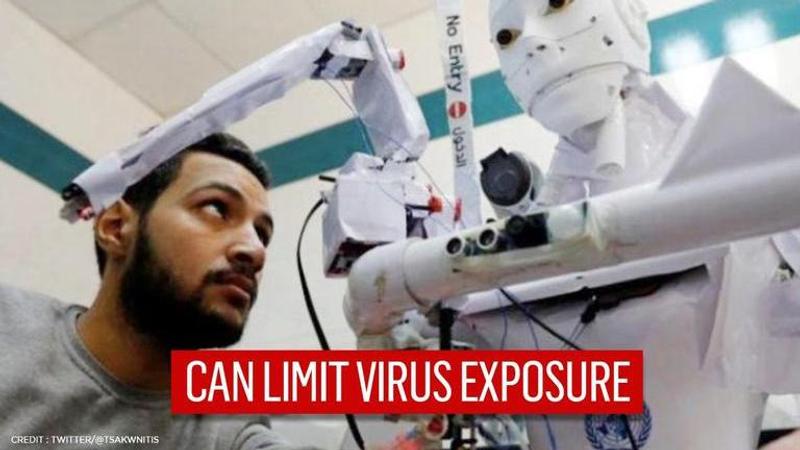Published 20:39 IST, November 26th 2020
Robot deployed in Egypt hospital to limit 'risk of exposure' for medics, ensure mask use
A remote-controlled robot named 'Cira 3' has been deployed at the hospital in Tanta to limit the exposure of the healthcare workers to the SARS-CoV-2 infection.

With the surge in the second wave of COVID-19 infections, Egypt has resorted to AI technology to assist with the onslaught of patients in the coronavirus dedicated hospitals currently pushed to their maximum capacities. A remote-controlled robot named 'Cira 3' has been deployed at the hospital in Tanta to limit the exposure of the healthcare workers to the SARS-CoV-2 infection.
The robot, according to sources of Egypt Today, will carry out the COVID-19 diagnosis, check the temperature, perform blood tests, and heart scans, including the X-rays. The machine with a human-like appearance will also ensure that the incoming people wore the protective face covering to minimize the risk of transmission to the medics. The robot was reportedly designed by scientist Mahmoud El-Komy.
Egypt first deployed the robots at the healthcare facilities when the first wave of the coronavirus hit in the month of June. Designed by Mohamed Abdel-Rahman, the first robots equipped with a camera and a microphone were seen in the isolation wards carrying out the duties such as transporting medicines to the wards to reduce the contact between the medical staff and coronavirus patients. According to sources of Egypt’s local broadcaster Arham, the AI machine effectively communicated with the patients using the microphone. The idea was first proposed after Egypt’s Doctors Syndicate raised grievances, noting, that more than 50 Egyptian medics had succumbed to the coronavirus infection due to close contact with the patients.
[A robot deployed at a private ward COVID-19 to minimize staff and patient contact]
Reduced exposure for staff
Speaking on state-owned Al-Oula satellite channel, researcher Mohamed Abdel-Rahman said that the locally-produced robot will provide “greater protection” to medical personnel as it could safely carry out jobs such as the distribution of medicines, food, clothing, and medical supplies in the wards. The robot could be wirelessly steered up to 1,000 meters outdoors, and up to 250 meters inside the building, he informed. Meanwhile, the hospital in Tunisia deployed similar robots that looked like a single limbed machine mounted on wheels. The robots performed health screening functions like tests for the pulse, temperature checks, and the blood oxygen of COVID-19 patients. The robot, that reduced the exposure for the staff and other patients alike with the coronavirus, enabled the nurses and doctors to make virtual bedside visits to the patients’ admission rooms.
(Image Credit: Twitter/@salmanclicks)
Updated 20:39 IST, November 26th 2020







